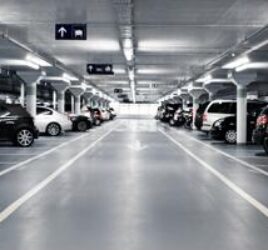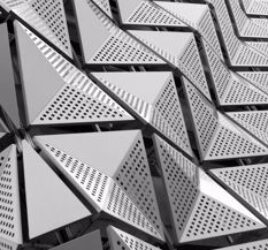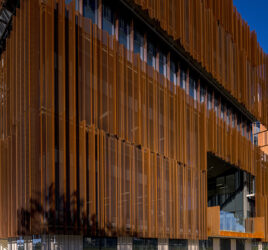
How to choose woven wire for an architectural project
So you've decided to incorporate woven wire into your next architectural project. Firstly, congratulations – you've chosen a versatile and aesthetically interesting product that can be used to add flair to a wide range of builds.
However, now you're faced with the happy problem of choice. Due to its ability to perform both visual and practical roles in the design of a building, and the fact that it can be used internally and externally, there's a fair bit of thought required when selecting woven wire for use in architecture.
Here are a few factors to bear in mind:
How will it function?
With a variety of materials and profiles to choose from, you need to consider the function of the woven wire you're planning to install.
Woven wire has a number of common purposes, including:
- Sun shading.
- Providing a shield from wind and rain.
- Creating a partition.
- Allowing the flow of air and light through a space.
However, a wire mesh feature intended to give a feeling of privacy is clearly going to require a different profile to one where the desired outcome is allowing more light into an area.
For example, in the redevelopment of the PwC premises in Sydney, Design Director Gavin Harris wanted a woven wire product for the ceiling that allowed transparency and reflectivity without losing light, aesthetics or sound in the space. Ultimately Locker Group's Planar 441 provided exactly the right balance, and was incorporated into this unique and interesting design.
You need to consider the function of the woven wire you're thinking of installing as part of your design.
You should also consider how the use of different metal substrates will impact the look of your design. Locker Group provides woven wire mesh in a variety of materials, including stainless steel, aluminium, brass and galvanised steel. Each contributes a different aesthetic to a space, so think about the atmosphere you're attempting to create.
Will it be used internally or externally?
Clearly there are different requirements for any metal-based architectural feature depending on whether it's used internally or externally. Wire mesh used to provide a feeling of privacy in a restaurant will be under a lot less stress from the elements than the same feature used to create a 3D effect on the outside of a building.
In addition to choosing the woven wire mesh that's best suited to the environmental conditions of your project, it's also important to think about finishing techniques. As well as protecting the metal substrate from the elements, finishing techniques can enhance its the visual proprieties – contributing to how it will impact your design.
How much does it weigh?
The relative weights of the elements you include in your building design are of great importance when establishing safety and costs. We'll return to costs in a bit more detail later, but let's have a look at the weights of woven wire mesh, and what this means for your design.
Of all the metal materials you're likely to use in your project, woven wire products will probably be the lightest. They range from 0.178 kilograms per square metre (kg/m²), for grade-316 stainless steel, to 8.1 kg/m² for galvanised steel.
Whilst there are obvious benefits of using lightweight elements such as wire mesh, there are still important safety considerations – especially for architectural applications such as building facades. The installation of any panel facade, whether wire mesh or perforated metal, should be preceded by a thorough examination of the fixing system, and what the implied load will be for the support structure. For external uses, it's also important to factor in wind loads, especially on corners.
Of all the metal materials you're likely to use in your project, woven wire products will probably be the lightest.
AS/NZS 1170 is the most important standard regulating load requirements for buildings, so ensure that your mesh manufacturer is able to provide full certificates for the products they supply to you.
As well as the implications for the building itself, you should consider how weight will impact on the ease of installation. Returning to our example from the PwC design in Sydney, a supporting spring line was required to ensure a fast and safe implementation of the woven wire on the ceiling. Making these considerations in advance can save you time and money when it comes to bringing your design to life.
What will it cost?
After safety, costs and deadlines are the biggest considerations. Builds have tight budgets and timeframes, so you need to ensure that the materials you choose aren't going to break the bank or cause you to fall behind.
This, again, is where the lightweight nature of wire mesh really comes into its own. Woven wire mesh is typically easy to install, reducing labour costs and helping you stick to deadlines.
For example, when Locker Group supplied stainless steel woven wire for use in Vogel House, a high profile building in the parliamentary district of Wellington, New Zealand, the installation process was completed in a matter of days. The mesh was delivered in three rolls and attached at the top and bottom of the staircase it was screening, with Locker Group providing technical assistance to ensure a fast but safe installation.
As such a versatile and easy material to work with, it's no wonder that woven wire plays a role in so many architectural designs around the world. Locker Group works closely with its clients to create tailored products that fit your requirements, and your budget.




